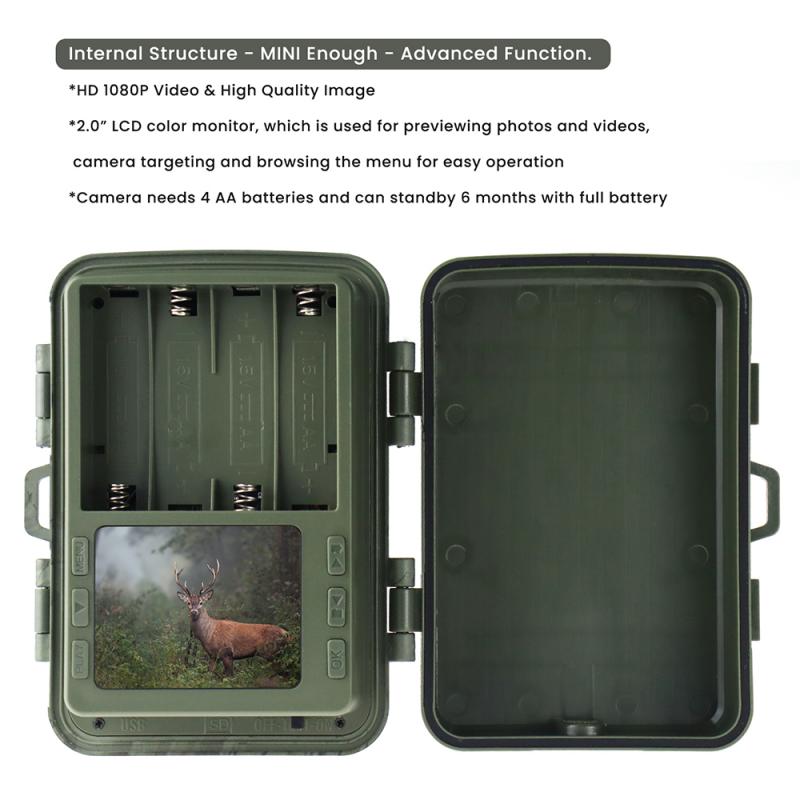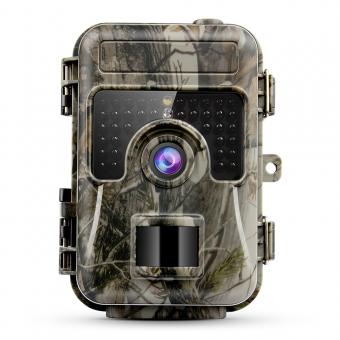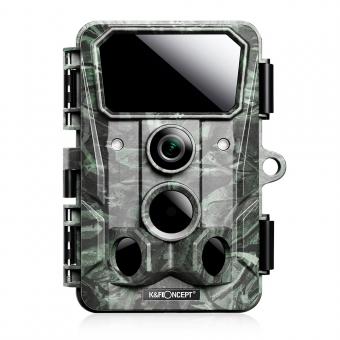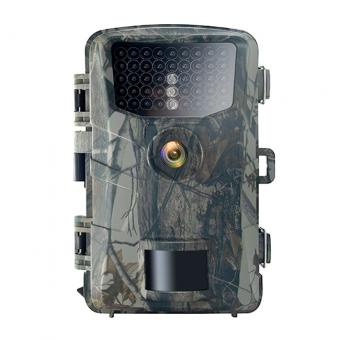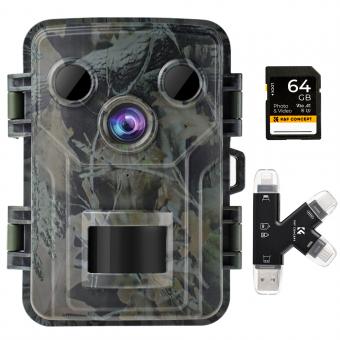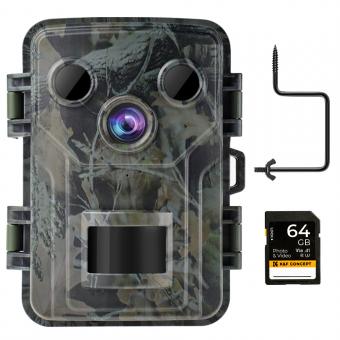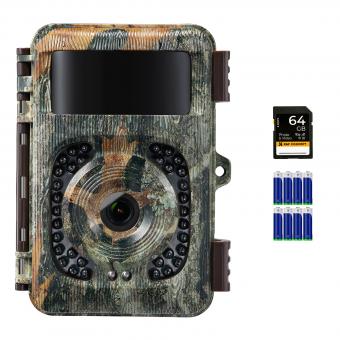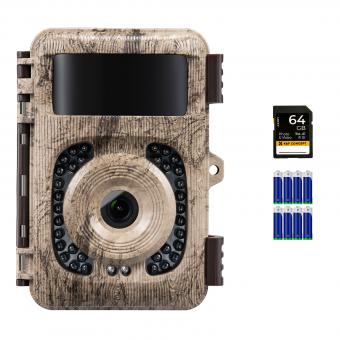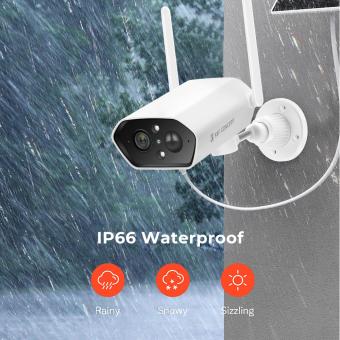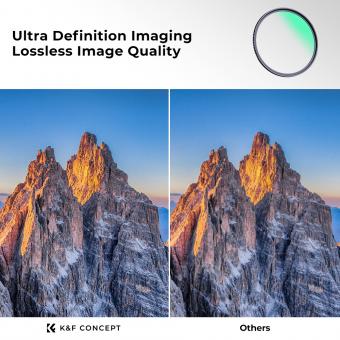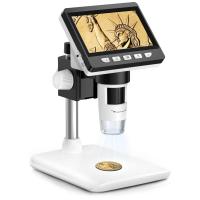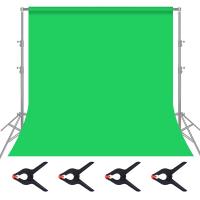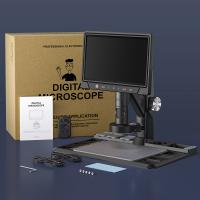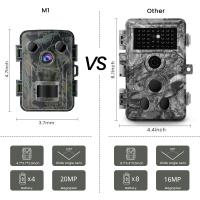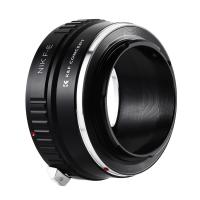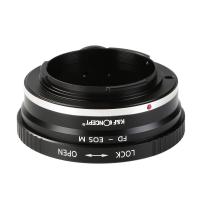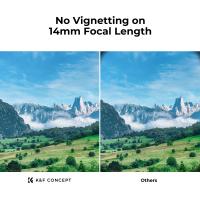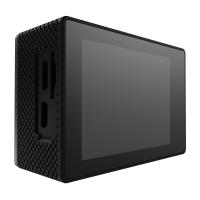How To Set P A Toguard Wildlife Camera ?
To set up a Toguard wildlife camera, begin by selecting a suitable location for the camera. Look for an area with frequent wildlife activity, such as near a trail or watering hole. Ensure that the camera is mounted securely to a tree or post using the provided straps or mounting bracket. Adjust the camera angle to capture the desired field of view.
Next, insert batteries into the camera and insert a memory card to store the captured footage. Make sure the camera is turned off before doing this. Once the camera is ready, turn it on and navigate through the settings menu to configure the desired options, such as resolution, photo or video mode, and motion detection sensitivity.
After setting up the camera, perform a test to ensure it is functioning properly. Walk in front of the camera's field of view to trigger the motion detection and check if it captures photos or videos as expected. Adjust the settings if necessary.
Lastly, regularly check the camera and replace batteries and memory cards as needed. Retrieve the captured footage by removing the memory card and connecting it to a computer or using the camera's built-in display or USB port.
Remember to follow any additional instructions provided by the manufacturer for your specific Toguard wildlife camera model.
1、 Choosing the right location for your Toguard wildlife camera
Choosing the right location for your Toguard wildlife camera is crucial to ensure optimal performance and capture the desired wildlife activity. Here are some steps to help you set up your Toguard wildlife camera effectively:
1. Research and scout the area: Before setting up your camera, it's essential to research and identify the best location for wildlife activity. Look for signs such as tracks, droppings, or feeding areas to determine where animals frequent.
2. Consider the camera's field of view: Toguard wildlife cameras have a specific field of view, so it's important to position the camera in an area where it can capture the desired wildlife activity. Ensure that the camera is facing the right direction and has a clear line of sight.
3. Mount the camera securely: Use the provided mounting strap or bracket to secure the camera to a tree or post. Make sure it is stable and won't be easily knocked over by animals or harsh weather conditions.
4. Adjust the camera settings: Toguard wildlife cameras offer various settings such as motion detection sensitivity, time-lapse intervals, and video resolution. Customize these settings based on your specific needs and the wildlife you are trying to capture.
5. Test the camera: Before leaving the camera unattended, test it to ensure it is functioning correctly. Check the battery life, memory card capacity, and make sure the camera is capturing clear images or videos.
6. Regularly check and maintain the camera: It's important to periodically check the camera to ensure it is still functioning properly. Replace batteries, clear memory cards, and clean the lens to avoid any disruptions in capturing wildlife activity.
Remember, the latest point of view when setting up your Toguard wildlife camera is to consider the impact of human activity on wildlife. Avoid placing the camera in areas where it may disturb or harm animals. Additionally, consider using camouflage or concealment techniques to make the camera less noticeable to wildlife and potential thieves.
By following these steps and considering the latest perspectives on wildlife conservation, you can effectively set up your Toguard wildlife camera and capture fascinating wildlife activity.
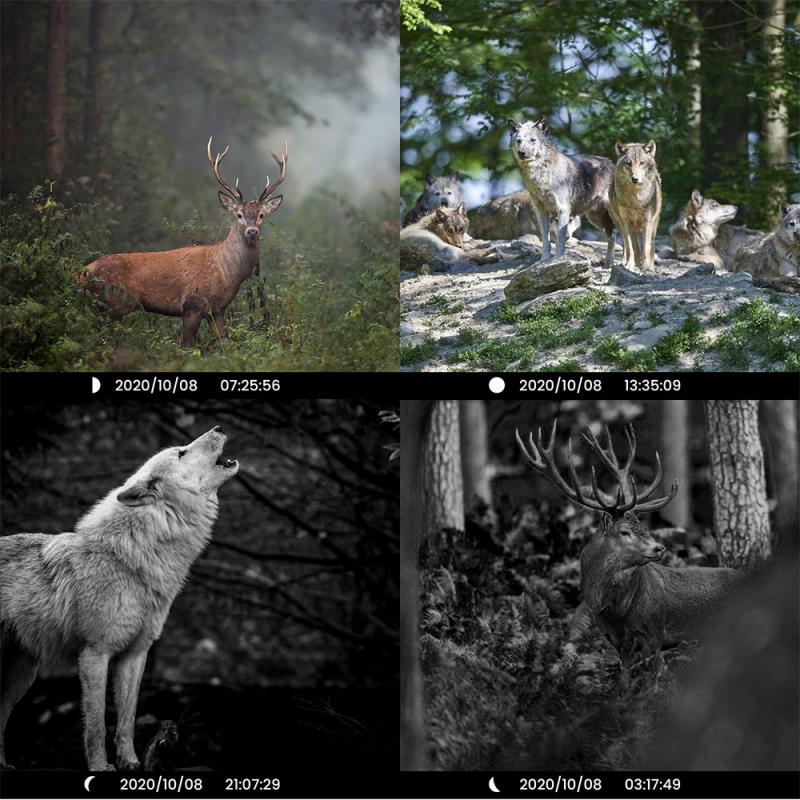
2、 Mounting and securing your Toguard wildlife camera properly
Mounting and securing your Toguard wildlife camera properly is essential to ensure optimal performance and protect it from theft or damage. Here is a step-by-step guide on how to set up a Toguard wildlife camera:
1. Choose the right location: Select an area where wildlife activity is frequent, such as near a watering hole, game trail, or feeding area. Ensure that the camera is not obstructed by branches or other objects that may interfere with the field of view.
2. Mount the camera: Use the provided mounting strap or bracket to attach the camera to a sturdy tree or post. Make sure the camera is positioned at the desired height and angle for capturing wildlife activity. It is recommended to mount the camera at a height of 3-4 feet for optimal results.
3. Adjust the settings: Before turning on the camera, adjust the settings according to your preferences. This includes setting the resolution, video length, time-lapse interval, and sensitivity level. Refer to the user manual for detailed instructions on how to navigate the camera's menu and adjust the settings.
4. Insert batteries and memory card: Open the battery compartment and insert the required batteries. Ensure that they are inserted correctly, following the polarity markings. Insert a compatible memory card into the designated slot, ensuring it is properly seated.
5. Test the camera: Turn on the camera and perform a test to ensure it is functioning correctly. Walk in front of the camera's field of view to check if it detects motion and captures clear images or videos. Adjust the sensitivity level if necessary.
6. Secure the camera: To prevent theft or tampering, consider using a security box or cable lock to secure the camera to the mounting location. This will provide an additional layer of protection and peace of mind.
7. Regularly check and maintain: It is important to periodically check the camera to ensure it is functioning properly and to replace batteries or memory cards as needed. Additionally, clean the lens and remove any debris that may obstruct the camera's view.
By following these steps, you can set up your Toguard wildlife camera effectively and increase your chances of capturing stunning wildlife footage. Remember to respect wildlife and their habitats while using the camera, and always follow local regulations and guidelines.
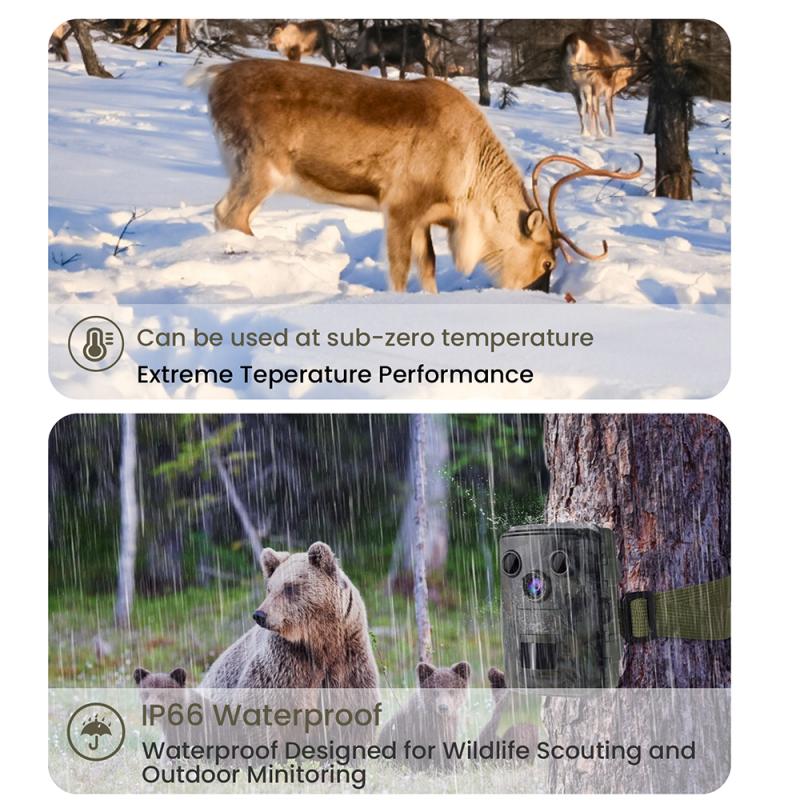
3、 Adjusting the camera settings for optimal wildlife monitoring
To set up a Toguard wildlife camera, follow these steps:
1. Choose the right location: Find an area where wildlife activity is frequent, such as near a watering hole, animal trails, or feeding areas. Ensure the camera is hidden and protected from direct sunlight and harsh weather conditions.
2. Mount the camera: Use the provided mounting strap or bracket to securely attach the camera to a tree or post. Make sure it is stable and positioned at the desired angle for capturing wildlife movements.
3. Insert batteries and memory card: Open the camera's battery compartment and insert the required batteries. Then, insert a compatible memory card to store the captured footage. Ensure the memory card is formatted correctly.
4. Power on the camera: Turn on the camera by pressing the power button. Some models may require you to set the date and time before proceeding.
5. Adjust camera settings: Access the camera's menu by pressing the menu button. Here, you can adjust various settings such as photo or video resolution, motion detection sensitivity, time-lapse intervals, and trigger delay. Set these settings according to your preferences and the specific wildlife you want to monitor.
6. Test and fine-tune: Before leaving the camera unattended, test it by walking in front of it to ensure it captures motion properly. Make any necessary adjustments to the camera's position or settings to optimize its performance.
7. Secure the camera: To prevent theft or damage, consider using a security box or camouflage cover to conceal the camera further. Additionally, ensure the camera is protected from curious animals or potential vandalism.
By following these steps, you can set up your Toguard wildlife camera and adjust the settings for optimal wildlife monitoring. Remember to periodically check the camera, replace batteries and memory cards, and review the captured footage to gain valuable insights into the behavior of the wildlife in your area.
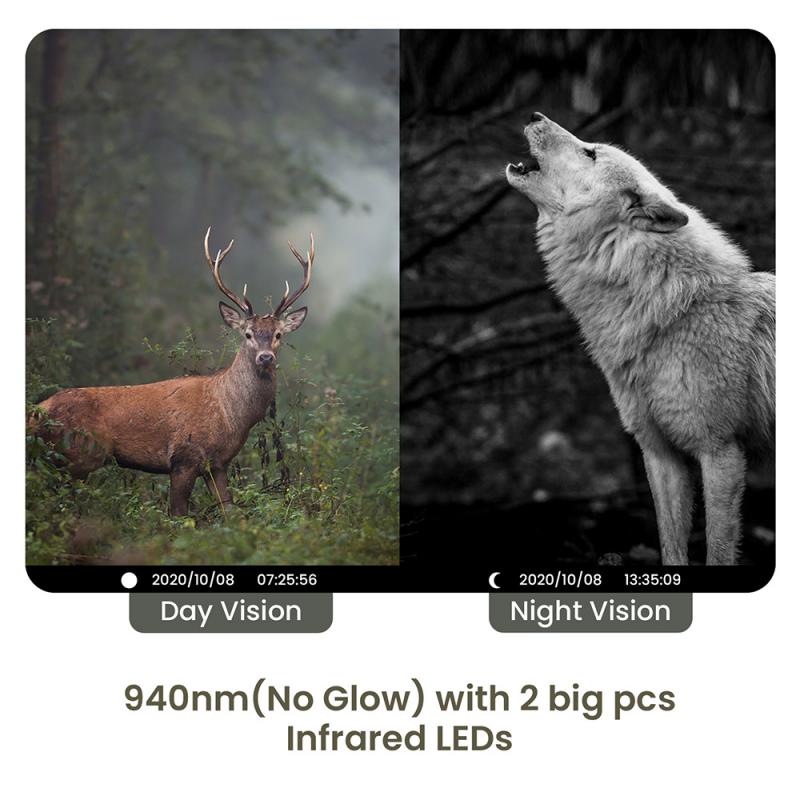
4、 Powering your Toguard wildlife camera efficiently
Powering your Toguard wildlife camera efficiently is crucial to ensure uninterrupted surveillance and maximize the camera's performance. Here are some steps to set up and power your Toguard wildlife camera effectively:
1. Choose the right power source: Toguard wildlife cameras typically use batteries or solar panels for power. If you opt for batteries, make sure to use high-quality rechargeable batteries to minimize the need for frequent replacements. Alternatively, solar panels can provide a sustainable and continuous power source, especially in remote areas.
2. Position the camera strategically: Before mounting the camera, carefully select a location that offers a clear view of the target area. Ensure that the camera is protected from direct sunlight and extreme weather conditions to prolong its lifespan.
3. Mount the camera securely: Use the provided mounting accessories to attach the camera to a tree, post, or other stable surfaces. Ensure that the camera is firmly fixed to prevent any movement or tampering.
4. Adjust camera settings: Once the camera is mounted, configure the settings according to your requirements. This may include adjusting the resolution, motion detection sensitivity, and time-lapse intervals. Refer to the user manual for detailed instructions on accessing and modifying these settings.
5. Test the camera: Before leaving the camera unattended, conduct a test to ensure that it is functioning correctly. Check the battery level or solar panel connection, and verify that the camera captures clear images or videos.
6. Regular maintenance: Periodically check the camera to ensure it remains in optimal condition. Clean the lens to remove any dirt or debris that may affect image quality. Additionally, monitor the battery level or solar panel performance to ensure uninterrupted power supply.
By following these steps, you can efficiently set up and power your Toguard wildlife camera, allowing you to capture high-quality footage and monitor wildlife activity effectively.
